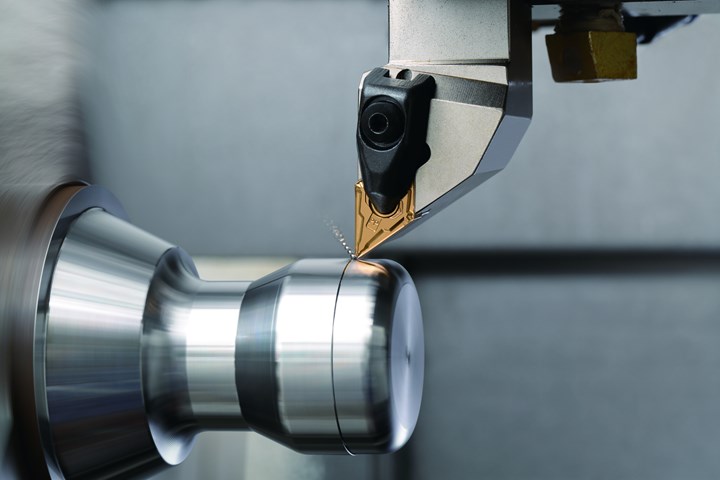Solid Tool or Indexable Inserts? Why Not Both!
Kyocera SGS Precision Tools’ mill-turn demonstrations highlight varied tool choices and varied application knowledge.
Share






When does an application call for an indexable-insert cutting tool rather than solid carbide? With both tooling types on display in a shared space – an IMTS first for the jointly branded company – Kyocera SGS Precision Tools is likely to have the answer. In addition to standard milling and turning offerings, SGS’s solid line includes sweeping-geometry, circle-segment “barrel cutters” and coolant-through drills, while highlights of Kyocera’s indexables range from end and face mills to grooving, turning and drilling tools.
With application knowledge as broad as the jointly branded product offering, booth representatives also stand ready to show rather than tell. Live cutting demonstrations of both cutting tool types highlight where and why each stands out, while also showcasing the inherent flexibility of a mill-turn machine capable of milling and turning with both indexable or solid carbide tools.

Solid tools like the one cutting the blisk are the province of SGS, while indexable offerings like the turning tool are Kyocera’s specialty. Photo Credit: Kyocera SGS Precision Tools

Related Content
-
Quick-Change Tool Heads Reduce Setup on Swiss-Type Turning Centers
This new quick-change tooling system enables shops to get more production from their Swiss turning centers through reduced tool setup time and matches the performance of a solid tool.
-
Medical Shop Performs Lights-Out Production in Five-Axes
Moving to five-axis machining enabled this shop to dramatically reduce setup time and increase lights-out capacity, but success relied on the right combination of workholding and automation.
-
Lean Approach to Automated Machine Tending Delivers Quicker Paths to Success
Almost any shop can automate at least some of its production, even in low-volume, high-mix applications. The key to getting started is finding the simplest solutions that fit your requirements. It helps to work with an automation partner that understands your needs.












